[Photograph of Pedro Marqués in Madrid: Kristin Dykstra, 2009.]
Notices on Obits
Kristin Dykstra, Illinois State University
 In 2003, Italy’s International Writers’ Parliament invited Pedro Marqués to travel from Cuba to their country and present his work. Thanks to the support accompanying the invitation, he was able to spend substantial time in Italy, and he subsequently received recognition and support for his writing in Portugal. Marqués composed the collection of poems now entitled Óbitos (Obits) between 2003 and 2007, writing primarily in those two European countries. He now resides in Spain, where he works at a psychiatric hospital.
In 2003, Italy’s International Writers’ Parliament invited Pedro Marqués to travel from Cuba to their country and present his work. Thanks to the support accompanying the invitation, he was able to spend substantial time in Italy, and he subsequently received recognition and support for his writing in Portugal. Marqués composed the collection of poems now entitled Óbitos (Obits) between 2003 and 2007, writing primarily in those two European countries. He now resides in Spain, where he works at a psychiatric hospital.
As a doctor with professional experience in mental health, Marqués has long been reflecting on classifications of illness and wellness, and the ways in which societies imagine treatment. Reviewing more of his poetry, readers will find frequent reference to spaces such as hospitals and asylums, as well as a tendency to note perspectives through which bodies are analyzed by different sorts of professionals, among them scientists.
The following selection of poems from Obits taps into Marqués’ long-standing interests in medicine, power, and the marginalization of peoples. They also draw on his more recent readings in Cuban history of the late nineteenth century, although he tells me that he did not originally plan to apply those to the composition of poetry. Marqués finds himself particularly drawn to the issue of criminality and therefore to the “crónica roja,” or the nineteenth-century press accounts focused on crime and criminals. In recent years he has also been reading a great deal about the phenomenon of suicide.
In one of our conversations Marqués jokingly characterized himself as a failed sociologist. More seriously, he takes a sustained interest in how violence functions as an organizing thread in societies past and present. He enjoys archival research, the first-hand encounter with a document. Yet he is less interested in the surface “facts” that documents purport to present than in the potential for a reader to envision shadowy presences that are only suggested by documentation – that is, imagining the suppressed subjects and marginal lives at which an archive only hints.
Perhaps this is his most utopian vision for what the creative action of poetry can offer us. Other forms of utopia being conspicuously absent from these poems, despite the ubiquitous association of islands, and Cuba in particular, with utopia in so much literature. To this speculation I must add, however, that Marqués is careful to say that he does not see poetry as offering redemption from that violence whose contours it traces.
The title of his collection, Óbitos, points to mortality of various kinds. Literal death is clearly present, as in the catalogue of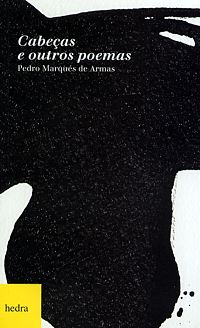 deaths in “Crónica” (“Chronicle”). I would suggest that social deaths are also present for many of the people represented here, for whom some confining social and legal status prevents access to fuller lives as citizens. To translate the word “óbitos,” I considered the colloquial option of “deaths” and the more elaborate but awkward sound of “demises.” In the end I settled on a term that arrived in English by way of French: “obit” is still classified in some dictionaries as a foreign term operating in English. It remains unusual enough to catch the eye.
deaths in “Crónica” (“Chronicle”). I would suggest that social deaths are also present for many of the people represented here, for whom some confining social and legal status prevents access to fuller lives as citizens. To translate the word “óbitos,” I considered the colloquial option of “deaths” and the more elaborate but awkward sound of “demises.” In the end I settled on a term that arrived in English by way of French: “obit” is still classified in some dictionaries as a foreign term operating in English. It remains unusual enough to catch the eye.
The title of this collection does need to be charged with its own sense of drama. The short poem “también tú” (“and also you”), which implicates the reader in the world of the poems, asks us to dwell on the term “óbitos”: “fíjate qué / palabra” (“look, what / a word”). Too bland a rendition of the term would fail this poem in its English incarnation.
For the translator another risk is to adopt a term that might be excessively indirect or obscure, which can mute the poem. Fortunately the collection’s title gives the translator another option which is neither dull nor silencing: “obits” is not as colloquial a term in English as “deaths,” but the related term “obituary” is utterly common, since it is the name for the genre of newspaper writing that recognizes a death in the community. “Obit.” has come to be accepted as its standard abbreviation. Given Marqués’ fascination with the press, and with the public status of people branded as criminal or insane or both, I’m pleased to rely on language from public announcements for the deployment of the translation.
If the resulting translation “obit” conjures adequate meaning for most readers via its association with the press, some may recognize another rich layer of meanings in the shared root: “from Latin obitus going down, setting, death” (Oxford Essential Dictionary of Foreign Terms in English). As an appropriated foreign term used in English, “obit” also initially referred to memorial ceremonies. This history of the word offers another fine way to think about Marqués’ approach to poetry, this time in terms of how ethics meets with performance in rituals addressing death. Can we call these poems, which mark an individual’s points of interface with records of violence and suppression, a form of mourning? or are the poems doing something else?
In his collection as a whole, Marqués has blended his source material from press accounts with moments inspired by other writers. Here I’ll briefly note examples that may be of interest to readers. José Lezama Lima’s “Oda a Julián del Casal” (“Ode to Julian del Casal”) threads into “Chronicle” with a slight variation on Lezama’s phrase “ansias de aniquilarme sólo siento” – itself a phrase extracted from an earlier poem by Casal, “Nihilismo.” Elsewhere Marqués cites Buchner’s Lenz more openly; he is interested in the title character, who embodies the energy and creativity of madness until a crucial moment when that activity comes to a stop. Kafka makes an appearance to state, “For the last time psychology.” Marqués’ woman from Ardennes, meanwhile, is a figure from the history and texts of the French Revolution: Théroigne de Méricourt was institutionalized as a madwoman. Jean-Étienne Dominique Esquirol carried out an autopsy on her body after her death, as the hair and nails continued to grow on the cadaver.
In several cases, our conversation influenced me to choose options for these translations that aren’t entirely literal. In “Acerca de un documento” (“About a document”) I selected terms that emphasize the importance of sugar plantations to the scene as a whole. Marqués notes that twin powers (the sharp edges or blades of the poem) supported the plantation economy, a system organizing much of Cuban society in the nineteenth century: the power of the owners themselves, and the power of the church.
The end of “Chronicle” offers an interesting confluence of factors related to the power of the sugar plantation and its effects on the populace it organized:
el que echó la mora al agua
atada al cepo -dicen-
desde la eternidad
[the one who tossed the slave into the water
still in the stocks– so they call her:
negress in eternity]
This compact set of lines presents a series of challenges to the translator: melded race, gender, and philosophical categorizations comprise the poet’s take on language and history. First, the Spanish terms “mora” and “atada” are gendered feminine, so the gender has to be worked into the English somehow, even though English does not normally allow for as much efficient gender coding. Second, Marqués notes that “mora” should not be rendered as “Moor.” In the context of the nineteenth-century Cuban sugar economy, “la mora” indicates a more immediate African heritage attributed to the woman – and this label, defined by slavery in the Caribbean, dictated that someone could think her status meant she could be thrown into the water in stocks. Thirdly, the arrival at the line “desde la eternidad” embodies one of those connections that Marqués finds with other writers. He explains that he gestures to “Rimbaud, whose line Deleuze liked so much: ‘I am black [negro] from eternity.’ Slave women are designated slave women from eternity and, at times, they appear to have always been in stocks . . . in sum: a metaphor for eternal condemnation” (email, 17 November 2009; my translation). The metaphor foregrounds the consequences of formal and informal classification, the violent deployment of concept upon actual bodies and lives.
Some but not all of these selected poems from Óbitos were published in the original Spanish within a recent anthology of Marqués’ poetry: Cabeças e outros poemas (bilingual Spanish/Portuguese edition, selection and translation by Marcelo Flores; São Paulo: Hedra/Sibila, 2008). In addition to the source cited below, email exchanges with the author provided me with much of the information I’ve presented here, as did a followup meeting with Marqués in Madrid on November 28, 2009. I would like to thank him for his generosity: given that his poetry is grounded in such specific references, his clarifications and emphases were essential to both the translations and this introduction. They were also helpful as I considered how to conjure his points of reference for readers who might be unfamiliar not only with his own work, but with some of the people, places, events and/or clustered associations around which his poetry revolves.
***
"Obit, noun." The Oxford Essential Dictionary of Foreign Terms in English. Ed. Jennifer Speake. Berkley Books, 1999. Oxford Reference Online. Oxford University Press. Illinois State University. 17 November 2009 <http://www.oxfordreference.com/views/ENTRY.html?subview=Main&entry=t33.e4817>
POEMS from OBITS (2003-2007) * POEMAS de ÓBITOS (2003-2007)
Pedro Marqués
Tr. Kristin Dykstra
(Chronicle)
the Chinese man they strung up by a foot
at the inlets of San Lázaro
the one whose head stuck
in the filter for the aqueduct on Charles III
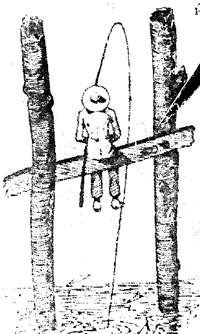 the one impaled at Burro
the one impaled at Burro
Hill the one cut to pieces
near the iron rails
the last peon
all those people in their predicaments
all those people in the shadow
of: what
the one who drank from the (public) flower of the urinals
who slit the Count’s throat and was taken for a madman
then invented a device to take his own life
(Gears-of-Perpetual-Machinery)
the executioner who got in through the hole in the wall
the one who cut the face of Father Claret
in a fit of rapture following mass
the shrouded man who passed him
the rustic blade the one who deployed
the poison that leaves no
trace (Gallic rose)
all those people in their predicaments
all those people in the shadow
of: what
Bompart’s lover
captured at the Hotel Roma
thirty yards from the Church of Christ
the one who cried out – before the twelve-year-old girl with olive skin
and the maddened father hung from a hook –
craving self-annihilation I know the one who survived
the turning of the press but not the legionella
the one who threw acid at Gomez the trader
next to the altar the one who lit the timber
the one who tossed the slave into the water
still in the stocks– so they call her:
negress in eternity
all those people in their predicaments
all those people in the shadow
of: what
(Crónica)
el chino que colgaron de un pie
en las Caletas de San Lázaro
el que se metió de cabeza
en los filtros de Carlos III
el empalado de la loma
del burro el trucidado
del camino de hierro
el último peón
toda esa gente en aprieto
 toda esa gente a la sombra
toda esa gente a la sombra
de qué
el que bebió la flor (pública) de los urinarios
el que degolló al Conde y lo dieron por loco
y después inventó un aparato para matarse
(Engranaje-Sin-Fin)
el verdugo que entraba por el boquete
el que le cortó la cara al Padre Claret
en un raptus luego de misa
el embozado que le pasó
la chaveta el que empleó
el veneno que no deja
traza (Rosa francesa)
toda esa gente en aprieto
toda esa gente a la sombra
de qué
el amante de la Bompart
apresado en el Hotel Roma
a 30 yardas de la Iglesia de Cristo
el que gritó -ante la trigueñita de los doce años
y el padre enloquecido colgado de un gancho-
ansias de aniquilarme siento el que soportó
el giro del tórculo pero no a las legionelas
el que arrojó vitriolo al negrero Gómez
junto al altar el que prendió yesca
el que echó la mora al agua
atada al cepo -dicen-
desde la eternidad
toda esa gente en aprieto
toda esa gente a la sombra
de qué
-------------------------------------------------------------------------------
WOMAN FROM THE ARDENNES. SECOND EXERCISE.
They shaved everyone’s head but hers. The hair and nails, not that discolored cerebrum, nor those carotids with the diameter of a feather: her final belongings.
When she leaned out the hospital window to shout:
“Leveling.”
She was already dead. But the cry she gave – ragged bird – rang out in the Bosphorus. How was it not going to snap the thread if they shaved even the grass and turned it to a path, as M. Esquirol gave signals with flags and Saint-Just, so deaf:
“Justice doesn’t mix with saintliness.”
Then the return by car to Liège.
Where was she going to be?
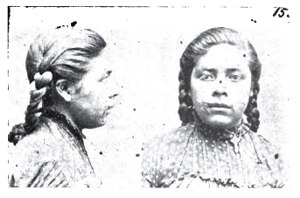
LA ARDENESA. SEGUNDO EJERCICIO.
Raparon todas las cabezas, menos la suya. El pelo y las uñas y no ese cerebro descolorido, ni esas carótidas del diámetro de una pluma: sus últimas pertenencias.
Cuando asomó por la ventana del pabellón para gritar:
-Nivelamiento.
Ya estaba muerta. Pero su grito -ave greñuda- repicó en el Bósforo. Cómo no iba a quebrar la cinta si hasta el césped raparon hasta convertirlo en sendero,
mientras M. Esquirol hacía señas con banderitas y Saint-Just, tan sordo:
-No se junta justicia y santidad.
Luego el regreso en coche, a Lieja.
¿A dónde iba a ser?
-------------------------------------------------------------------------------
and also you
in the obit (look, what
a word) of History
through a
veil watching

también tú
en el óbito (fíjate qué
palabra) de la Historia
por un velo a-
somado
-------------------------------------------------------------------------------
(odometer)
that which falls (for example) from on high
from a cardboard sky
next to the ploughshare
in Lenz
has its horizontality
(cuentapasos)
lo que cae (por ejemplo) desde lo alto
de un cielo de cartón
junto a la rejilla de arado
en Lenz
tiene su horizontalidad
------------------------------------------------
(Neptune’s obscured eye)
in measureless barbarism
some chop off the others’ hair
at what segment of the bone
are they
in what bracket of a concept
still
staggering around
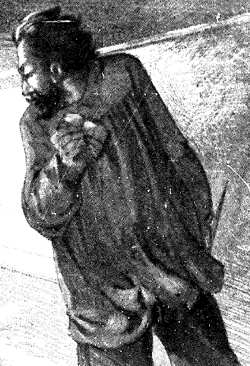
(el ojo negro de Neptuno)
en barberías insondables
pelándose los unos a los otros
en qué sección de hueso
están
en qué tramo de concepto
aún
dando tumbos
--------------------------------------------------------------------
“for the last time psychology,” they say
he said descending the stairs in starts
(in the brothel) the vomit came just before
the fall into the chorus girl’s arms
“por última vez psicología”, dicen
que dijo bajando a trompicones la escalera
(del prostíbulo) el vómito a punto
hasta caer en brazos de la corista
---------------------------------------------------------------------
it has moorings
and tight
reins
tie it
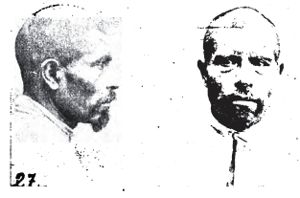 tight
tight
in an iamb with five
of these feet
and drag it along
to the darkened
house of the non
baroque
(that is if
you can)
poetry’s
got its
thing
tiene amarres
y riendas
cortas
amárrala
corto
con un yambo de cinco
pies
y arrástrala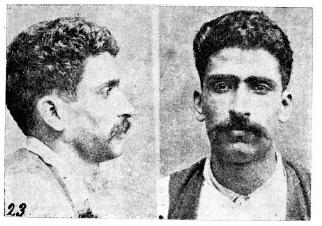
a la casa
oscura del no
barroco
(esto si
puedes)
poesía
tiene su
cosa
------------------------------------------------
ABOUT A DOCUMENT
what was there – you asked – between
the roundhouse and the storeroom,
just white space? just the carriage house
and the swine market? just miasmas
—populations? in any case
between the two filed edges of the plantation machine
what was there – you asked – and I think
I answered: any
number
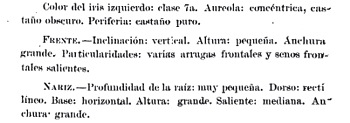
ACERCA DE UN DOCUMENTO
qué había -preguntaste- entre
la casa de máquinas y el almacén
¿sólo brecha blanca? ¿sólo la cochera
y el rastro de cerdos? ¿sólo miasmas
-poblaciones? en cualquier caso
entre las dos cuchillas del ingenio
qué había -preguntaste- y creo
que te respondí: cualquier
cantidad


